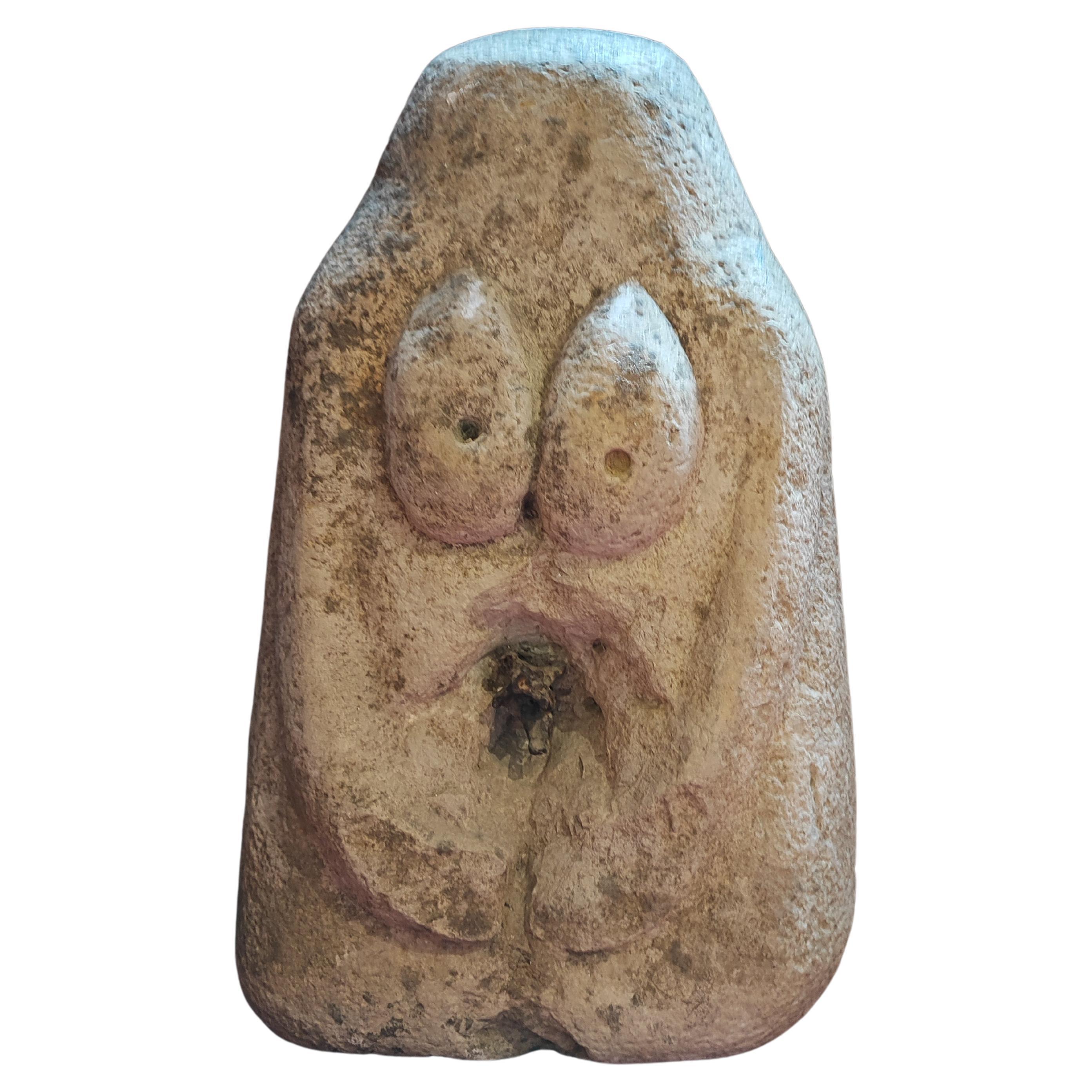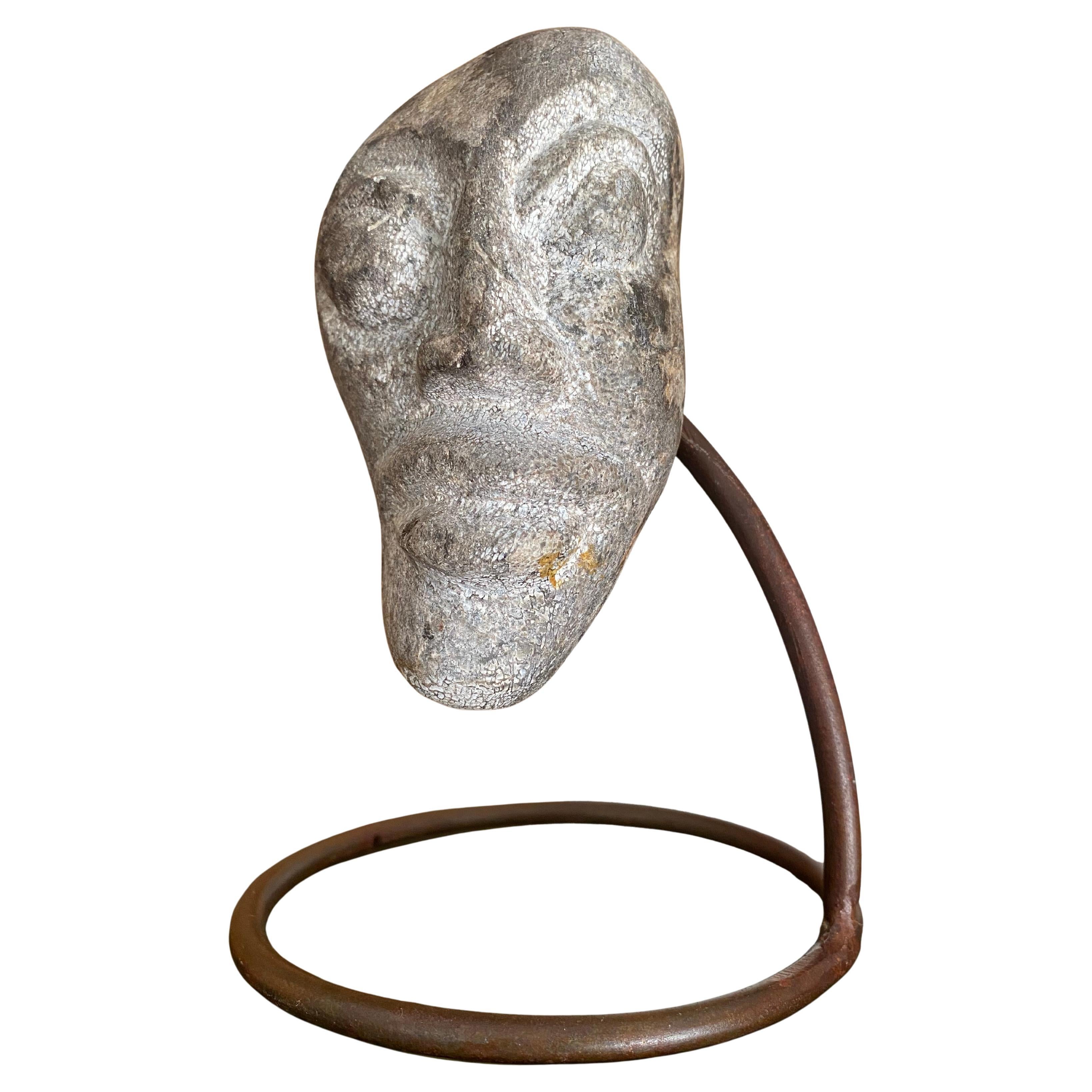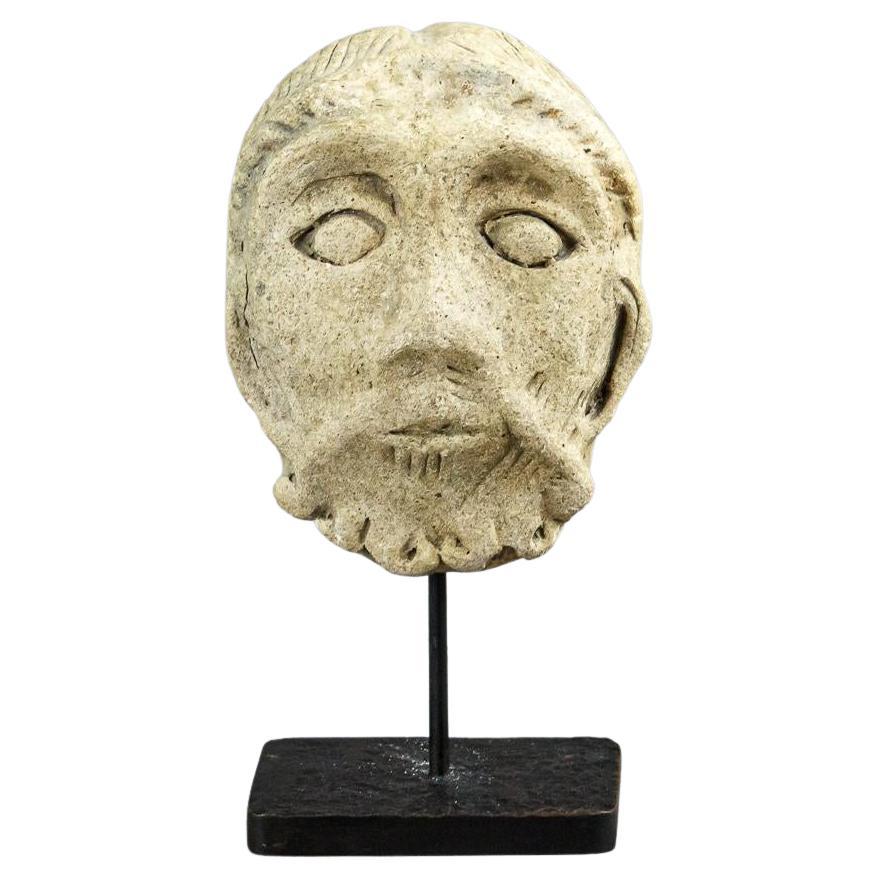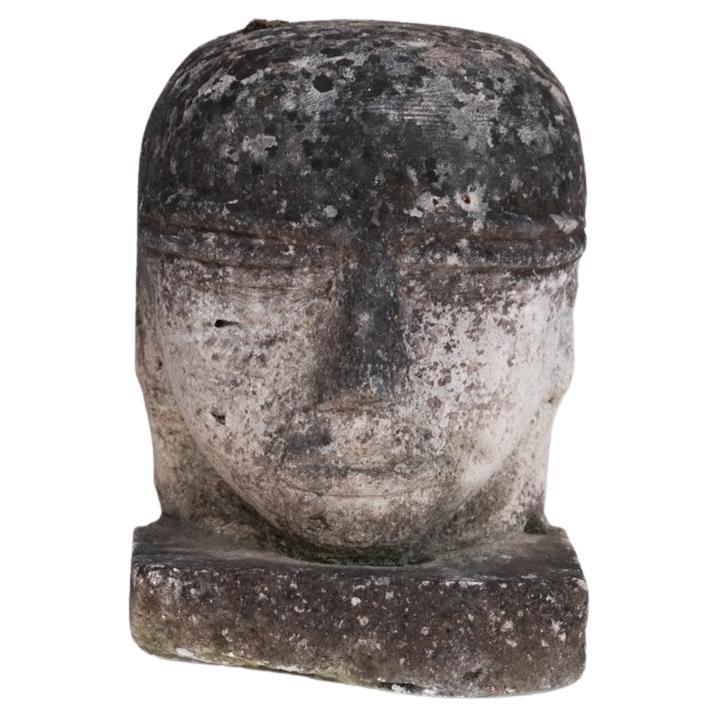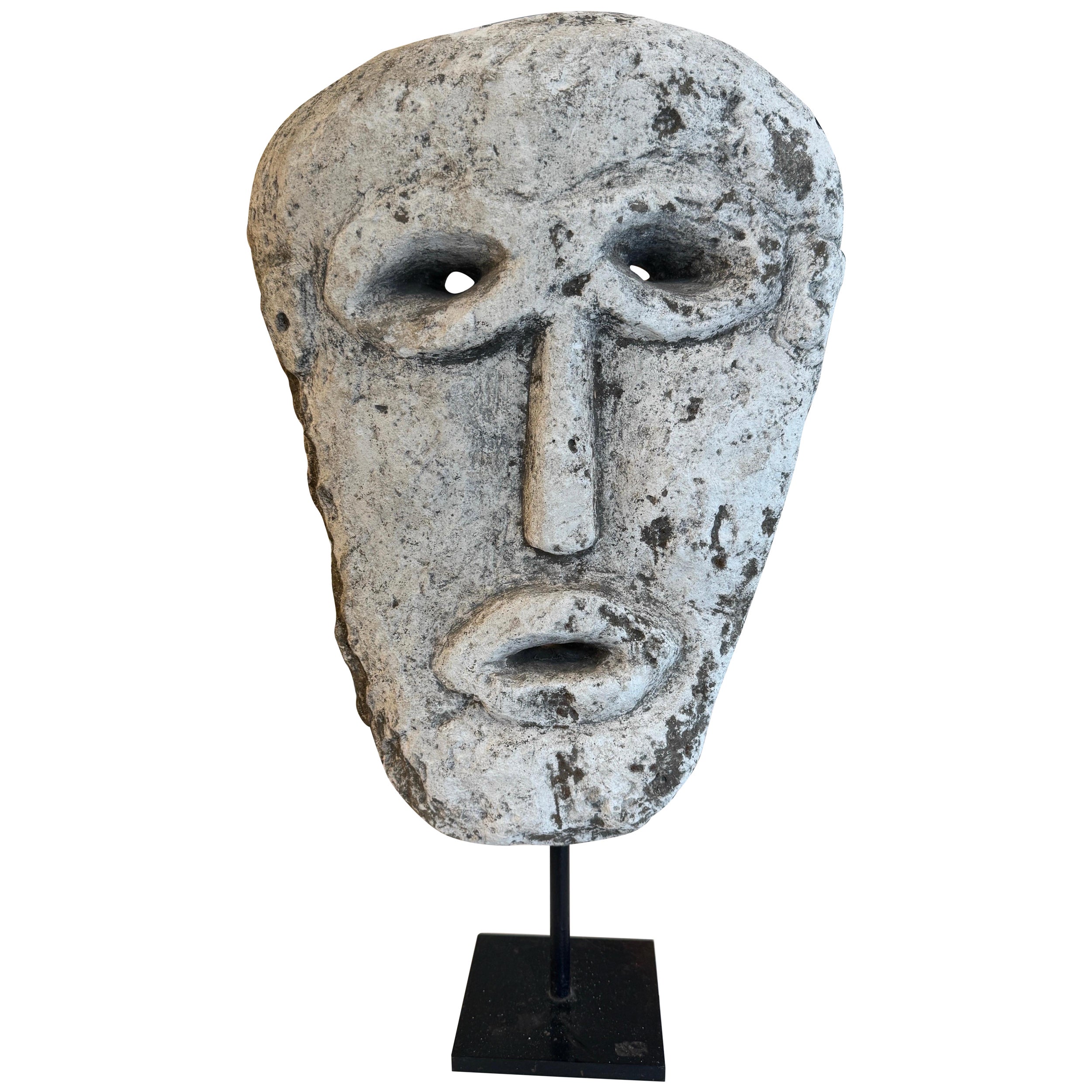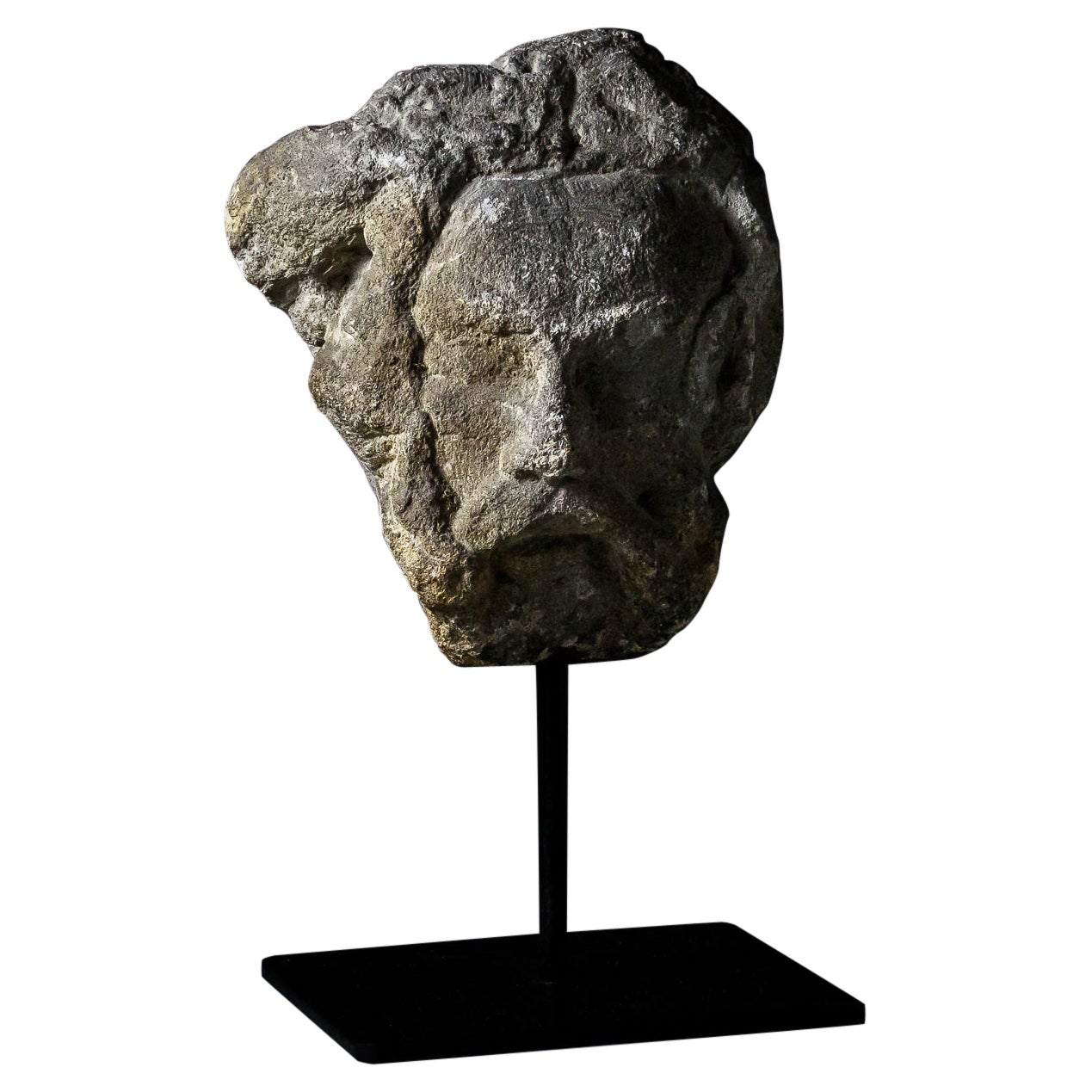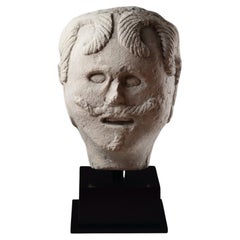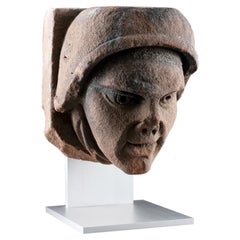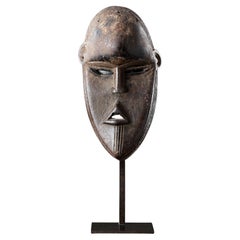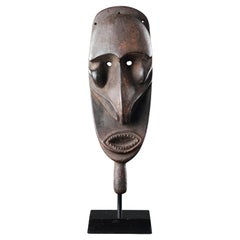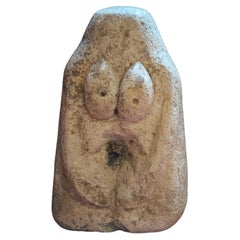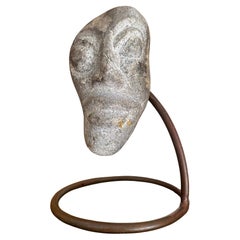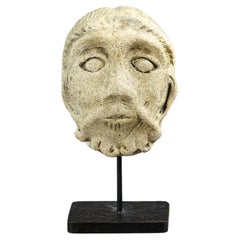Items Similar to A Celtic Stone Head with ‘Staring’ Eyes, Long Nose and Slit Mouth
Want more images or videos?
Request additional images or videos from the seller
1 of 7
A Celtic Stone Head with ‘Staring’ Eyes, Long Nose and Slit Mouth
$10,500
£7,967.16
€9,109.73
CA$14,665.65
A$16,306.21
CHF 8,514.20
MX$198,486.29
NOK 108,637.53
SEK 101,788.17
DKK 67,987.62
Shipping
Retrieving quote...The 1stDibs Promise:
Authenticity Guarantee,
Money-Back Guarantee,
24-Hour Cancellation
About the Item
A Celtic Stone Head with ‘Staring’ Eyes, Long Nose and Slit Mouth
Limestone
British
2nd Century BC - 1st Century AD
Size: 26cm high, 13cm wide, 16cm deep - 10¼ ins high, 5 ins wide, 6¼ ins deep
Provenance:
Ex Private English collection, before 2000
Ex Important East Anglian estate
Thence by descent
cf for similar facial features see: Ross, A., Pagan Celtic Britain, London, 1967, pl. 39a. and 91a.
Springs, wells and rivers are of first and enduring importance as a focal point of Celtic cult practice and ritual, and the human head, symbolic of divinity and a powerful Celtic motif, was always associated with sacred springs, wells and rivers. Made of stone, wood or metal, images of heads were used in making votive offerings and dropped into the waters. Many objects of a cult nature have been recovered from springs, wells, lakes, pools, bogs and rivers, suggesting that they were regarded as a focus for veneration and healing.
The Celts regarded the source of a river as a natural sanctuary and an entrance to the otherworld. In Ireland many rivers have goddesses names and Irish cult legends purport to the naming of the Boyne and the Shannon. The goddesses Boand and Sinann defied the magic powers of the well of Segais and the well of Coelrind, and as a result the wells rose up in anger drowning the goddesses and turned into mighty rivers, rushing down to the sea.
- Dimensions:Height: 10.25 in (26.04 cm)Width: 5 in (12.7 cm)Depth: 6.25 in (15.88 cm)
- Materials and Techniques:
- Place of Origin:
- Period:
- Date of Manufacture:2nd Century BC - 1st Century AD
- Condition:Wear consistent with age and use.
- Seller Location:London, GB
- Reference Number:1stDibs: LU9363243308642
About the Seller
No Reviews Yet
Recognized Seller
These prestigious sellers are industry leaders and represent the highest echelon for item quality and design.
Established in 1989
1stDibs seller since 2023
- ShippingRetrieving quote...Shipping from: London, United Kingdom
- Return Policy
Authenticity Guarantee
In the unlikely event there’s an issue with an item’s authenticity, contact us within 1 year for a full refund. DetailsMoney-Back Guarantee
If your item is not as described, is damaged in transit, or does not arrive, contact us within 7 days for a full refund. Details24-Hour Cancellation
You have a 24-hour grace period in which to reconsider your purchase, with no questions asked.Vetted Professional Sellers
Our world-class sellers must adhere to strict standards for service and quality, maintaining the integrity of our listings.Price-Match Guarantee
If you find that a seller listed the same item for a lower price elsewhere, we’ll match it.Trusted Global Delivery
Our best-in-class carrier network provides specialized shipping options worldwide, including custom delivery.More From This Seller
View AllEuropean Carved Limestone Celtic Votive Head of a Male Warrior
Located in London, GB
A Large European Carved Limestone Celtic Votive Head of a Male Warrior Wearing a Typical Flowing Moustache Small Beard and Curling Locks of Hair Stiffened with Lime Wash the Slit Mouth Open as if in Command
Circa 1st Century BC - 1st Century AD
Size: 31cm high, 22cm wide, 25cm deep - 12¼ ins high, 8¾ ins wide, 9¾ ins deep / 42cm high - 16½ ins high (with base)
From about 500 BC, first Greek and later Roman historians mention peoples living in a large area of non-mediterranean Europe as Celts. These classical chroniclers seem to have recognised these communities as having sufficient shared cultural traditions to justify their being given a common name, ‘Keltoi’ by the Greeks, and ‘Celtae’ or ‘Galli’ by the Romans. The earliest allusions to Celts by such Greek historians as Herodotus (485 - 425 BC) were followed by Polybius (200 - 118 BC) and Livy (59 BC - AD 17) who discuss the expansion of the Celts from their central European homelands during the 4th and 3rd centuries BC. They document the presence of Celts in Spain, France, Italy, Greece and Asia Minor, specifically central Turkey. They testify to the successful Roman resistance to the Celts in Italy, after the ignominy of the sacking of Rome by them in 387 BC, and describe the huge defeat suffered by the Celts at the battle of Telemon in northern Italy in 225 BC. The Celts in Greece who sacked the sacred site of Delphi in 279 BC were defeated by King Antigonos Gonatas of Macedon in 278 - 277 BC and in Turkey by Altalus of Pergamon in 240 BC. The Celts in Spain fell under the shadow of Rome from 2nd Century BC and the Celtic heartland known by the Romans as ‘Gaul’ was conquered by the Romans under Julius Caesar in the mid 1st Century BC. Britain was not referred to as Celtic by the ancient historians, but Caesar recognised the close similarities between Britain and Gaul especially in their political organisation. Tacitus (55 - 120 AD) and others chronicled the conquest of Britain between 43 and 84 AD some mentioning the fierce nature of the Celts who went into battle naked.
Celtic art therefore belongs to an artistic tradition in the early history of Europe which is no less important than that of the classical world. Art was central to Celtic identity and was closely related to the objects which it decorated. The Celts were used to seeing art as an integral part of their everyday lives.
Provenance:
Ex Finch and Co...
Category
Antique 15th Century and Earlier European Busts
Materials
Limestone
A Rare and Finely Carved Weser Renaissance Stone Head
Located in London, GB
A Rare and Finely Carved Weser Renaissance Stone Head
Stone
Germany
16th Century
Size: 23cm high, 21cm wide, 21cm deep - 9 ins high, 8¼ ins wide, 8¼ ins deep / 33cm high ...
Category
Antique 16th Century German Architectural Elements
Materials
Stone
A Powerful Female ‘Bakorozai’ Initiation Mask
Located in London, GB
A Powerful Female ‘Bakorozai’ Initiation Mask
The brown patina testifies to the ritual use and great age of this rare mask
Wood
Loma / Guerze-Kpelle, Liberia
Late 19th Century
...
Category
Antique Late 19th Century Liberian Tribal Art
Materials
Wood
A Ceremonial Mask
Located in London, GB
A Ceremonial Mask
Wood
Pentecost Island, Vanuatu
Early 20th Century
Size: 32cm high, 11cm wide, 7.5cm deep - 12½ ins high, 4¼ ins wide, 3 ins deep
Provenance:
Ex Private coll...
Category
Early 20th Century Vanuatuan Tribal Art
Materials
Wood
$35,000
A Powerful Baule Mask
Located in London, GB
A Powerful Baule Mask
With rich dark ‘lacquered black’ patina, excellent colour with areas of ‘kaolin’
Wood
Ivory Coast
Early 20th Century
Size: 32.5cm high - 12¾ ins high
Prov...
Category
Early 20th Century Ivorian Tribal Art
Materials
Wood
$40,500
A Rare Standing Stone / Slab / Marker with ‘Triskele’ Low Relief Design
Located in London, GB
A Rare Standing Stone / Slab / Marker with ‘Triskele’ Low Relief Design
Sandstone
Late Celtic - Early Christian
7th – 8th Century AD
Size: 62cm high, 28cm wide, 19cm deep - 24½ i...
Category
Antique 15th Century and Earlier British Antiquities
Materials
Sandstone
You May Also Like
Celtic Granite Carved Bust of a Female Figure
Located in Saint-Ouen, FR
CELTIC GRANITE CARVED BUST OF A FEMALE FIGURE
ORIGIN: FRANCE
PERIOD: CELTE
Height: 46 cm
Length: 28 cm
Depth: 16 cm
Made of granite
The body shapes of this figure are scarce...
Category
Antique 15th Century and Earlier Busts
Materials
Granite
Mounted Carved Stone Face Sculpture (Indonesia)
Located in Round Top, TX
A compelling carved stone face, mounted on a custom welded steel base. Of Indonesian origin, circa 1970s, the sculpture features stylized facial detailing with an enigmatic presence....
Category
Late 20th Century Indonesian Tribal Mounted Objects
Materials
Granite, Steel
Romanesque Antique Carved Stone Head
Located in Pease pottage, West Sussex
Engaging Romanesque Antique Carved Stone Head, intriguing linear incised hair, tightly curled beard and moustache, wide eyes and pronounced e...
Category
Antique 15th Century and Earlier French Figurative Sculptures
Materials
Limestone
Unusual Carved Stone French Head Sculpture
Located in London, GB
An unusual artist carved stone head.
France, c1920s.
One of a pair sold individually.
Location: Belgium Gallery.
Dimensions: 35 H x 18 D x 24 W in cm.
Delivery: P...
Category
Mid-20th Century French Figurative Sculptures
Materials
Stone
Ancient Anthropomorphic carved stone sculpture
Located in London, GB
A large ancient Timor stone ancestor carving from the Belu district of central Timor .
Category
Antique 15th Century and Earlier Timorese Antiquities
Materials
Stone, Metal
Early Carved Stone Head
Located in Pease pottage, West Sussex
Haunting Early carved stone head, possibly Neptune. France Circa 1780. Measurement includes stand.
Category
Antique Late 18th Century French Architectural Elements
Materials
Stone
$2,111
